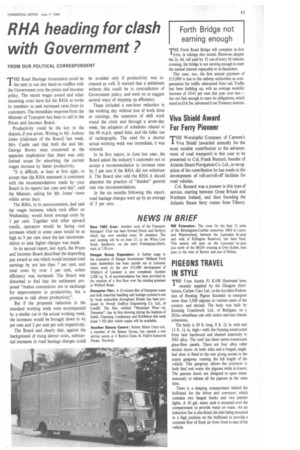PIGEONS TRAVEL IN STYLE
Page 45

If you've noticed an error in this article please click here to report it so we can fix it.
THE 5-ton Austin FJ K100 illustrated here, recently supplied by the Glasgow distributors, Carlaw Cars Ltd., to the Ayrshire Federation of Homing Pigeon Societies to transport more than 5,500 pigeons to various parts of the country and abroad. The body was built by Kenning Coachwork Ltd., of Bathgate, on a 201in.-wheelbase cab with centre and rear chassis extensions.
The body is 29 ft. long, 8 ft. 2+ in. wide and
13 ft. in. high—with the framing constructed from best hardwood and sheeted externally in NS3 alloy. The roof has three centre translucent glass-fibre panels. There are four alloy roller shutter doors on both sides and a hinged, singleleaf door is fitted to the rear giving access to the centre gangway running the full length of the vehicle. This gangway allows the conveyor to both feed and water the pigeons while in transit. The pannier doors are designed to open simultaneously to release all the pigeons at the same time.
There is a sleeping compartment behind the bulkhead for the driver and conveyor, which contains two hinged bunks and two interior lights. A 10 gal. water tank is mounted over the compartment to provide water en route. An air induction fan is also fitted, the inlet being mounted in a high position on the bulkhead to provide a constant flow of fresh air from front to rear of the vehicle.




















































































































































